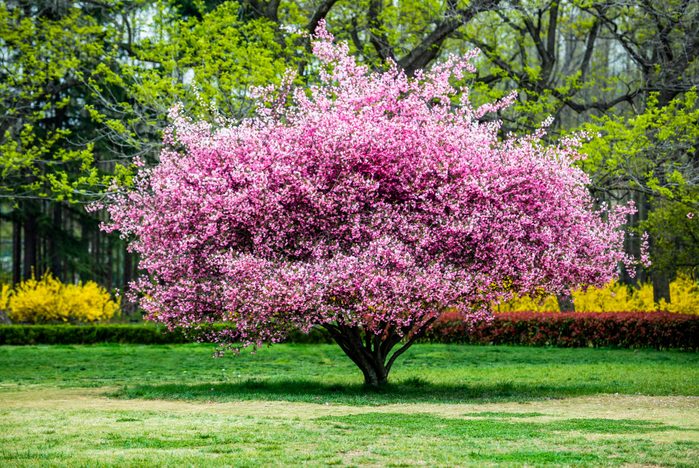
Crabapple Tree
Few spring flowering trees bloom as prolifically as the crabapple, with branches enveloped in a cloud of soft pink or white blossoms in early to mid-spring. The blooms are a welcome sight for pollinating bees, and its fruit makes a hearty snack for birds in fall and winter.
As they age, crabapple trees take on a unique character as their branches twist and the canopy widens. Plant them in an open, sunny space where they can mature beautifully through the decades. When shopping, look for varieties labeled disease resistant. This tree is hardy in U.S. Department of Agriculture Plant Hardiness Zones 4 through 8.
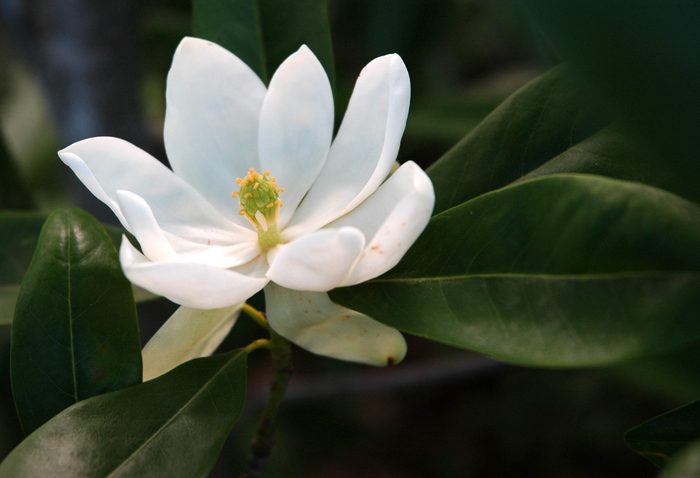
Sweetbay Magnolia
This iconic native tree is an absolute delight in the spring when its strong, sweet lemony fragrance fills the air. The creamy white, bowl-shaped blossoms attract several types of butterflies, and its red fruit attracts local wildlife.
Because the flowers are only two to three inches big, they make less of a mess when they fall compared to its larger cousin, the Southern magnolia.
Sweetbay magnolia has a broad hardiness range in USDA Zones 5 through 10, where it demands acidic soil and moisture. A protected spot in partial shade is best, but it will tolerate sun and shade conditions. Expect this tree to grow about 20 feet tall in the North and at least twice that size in the South.
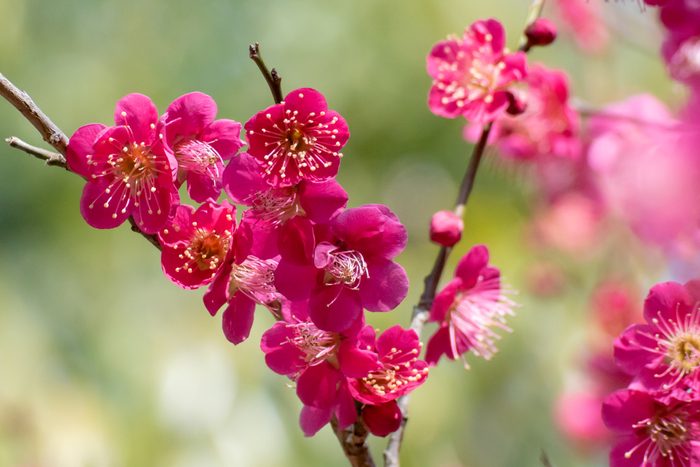
Japanese Flowering Apricot
One of the most highly anticipated and special times of the year finds the Japanese flowering apricot trees in bloom in Zones 6 through 9.
Exactly when the flowers decide to burst open depends on the temperature. In warmer climates with mild winters, it could be as early as January. More often, they’ll bloom in early spring before many other spring flowering trees.
You’ll smell this tree before you see it, as it exudes a strong, cinnamon-like fragrance. Although it produces small, sour fruits, this is not the same kind of apricot fruit you buy at the store. Expect it to grow 12 to 20 feet tall in about a decade. It needs full sun for its flowers to develop.
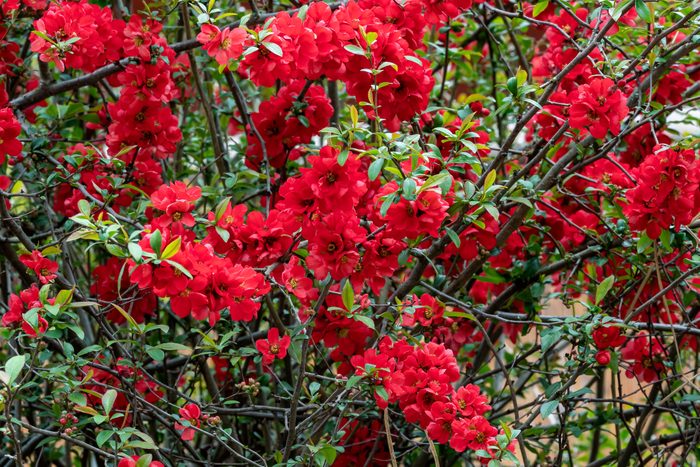
Quince
Known for its rugged beauty and lovely early-spring blossoms, this is one durable, drought tolerant shrub. No fussing required; it will live for many decades in a sunny, undisturbed spot in the landscape in Zones 4 through 8. It’s not uncommon for this shrub to outlive the homeowners who planted it.
Quince shrubs are best left unpruned because they develop their flower buds the year prior. Its small fruits make great jellies and jams when harvested right before frost in late fall. Although most quince varieties feature large thorns, Double Take quince are thornless. They also display double flowers that look like miniature roses.
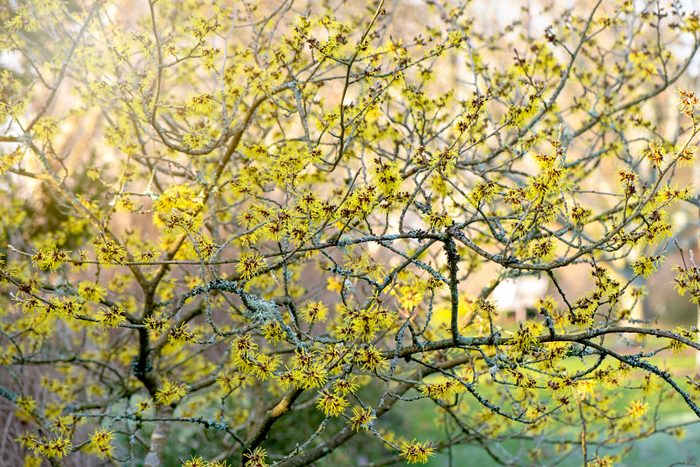
Vernal Witch Hazel
A sure sign that winter is nearing its end comes when our native vernal witch hazel (Hamamelis vernalis) bursts into bloom. Its spicy fragrance and yellow flowers shaped like party streamers are the perfect way to celebrate spring. Because they appear before the leaves, they’re easy to spot and enjoy.
In fall, the foliage turns the same shade of golden yellow as the flowers in the spring.
You’ll find this large shrub or multi-trunked small tree growing in the shade of taller trees in Zones 4 through 8. Because it can spread, it’s best used for naturalizing. If you’re looking for spring flowering shrubs, don’t confuse vernal witch hazel with Eastern witch hazel (Hamamelis virginiana), which blooms in the fall. Here’s a list of fragrance flowers for your garden.
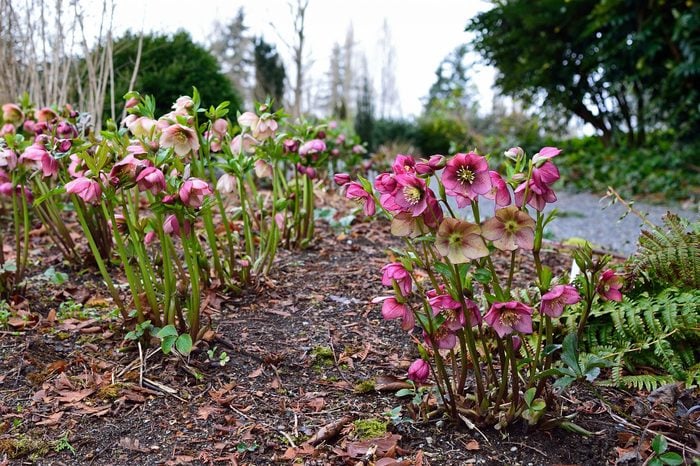
Lenten Rose
As soon as the snow melts, Lenten roses usher in the spring season. Their plump buds open to reveal two-inch-diameter, saucer-shaped flowers.
Single and double-flowered forms are available in shades of pink, purple, near-black, white and yellow. Each one is prettier than the next! Once you’ve experienced success growing your first Lenten rose, you’ll want to collect them all.
This evergreen perennial holds interest long past early summer when its flowers finish blooming. Handsome, umbrella-shaped leaves are evergreen, developing after bees pollinate the flowers. Because they’re toxic to mammals, deer and rabbits usually steer clear.
Lenten roses grow in Zones 4 through 9 in partial to full shade. They’re drought tolerant once established.
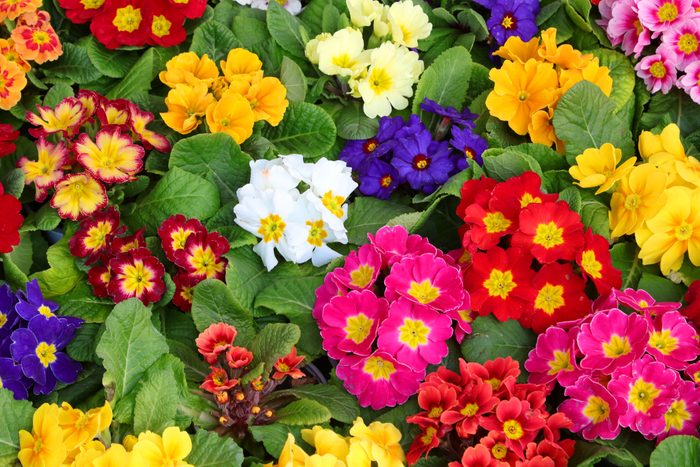
Primrose
Large, cheerful blossoms in every color of the rainbow decorate the tops of this short, mounding perennial beginning in early spring. That’s when you’ll find them sold as gift plants at florists and grocery stores. Or look for the longer-lived Belarina series of double-flowered, perennial primroses at garden centers.
Primroses grow beautifully in troughs, window boxes and at the front of the border in moist, well-drained soil. Their flowers are most vivid and long-lasting if you site them in some shade, because afternoon sun can be too harsh. Grow them nationwide in Zones 3 through 9.
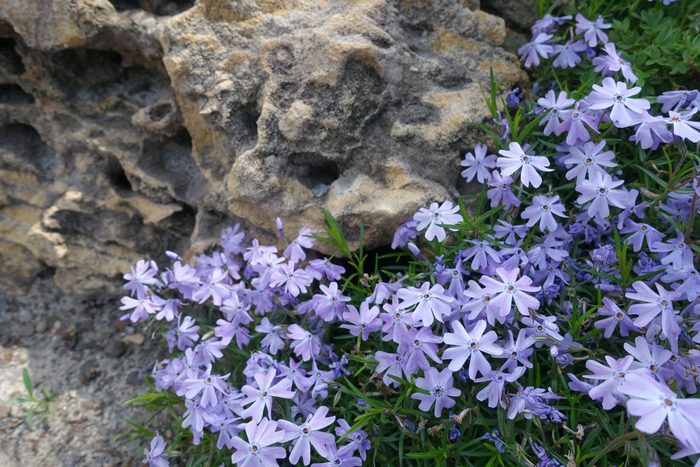
Spring Phlox
One of the most amazing places to see spring phlox in full bloom is in the Rocky Mountains (Zones 4 through 8), where it blankets craggy outcroppings and scrambles down hillsides. Think of that when choosing the best location to grow spring phlox in your garden. Lean, well-drained soil and full sun are a must.
In gardens, spring phlox forms a brilliant pink, blue, purple or white flowering ground cover, bringing in the early bees and butterflies. It’s the perfect complement for tulips, daffodils and spring blooming trees. Altogether, they’re a sight for sore eyes after a long winter.
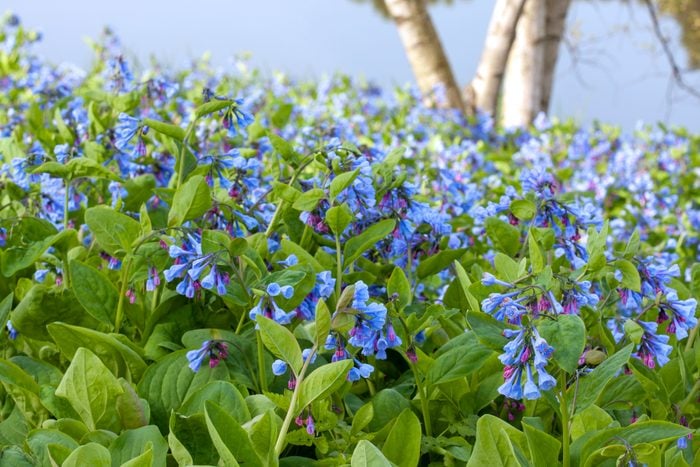
Virginia Bluebells
Virginia bluebells make a magnificent show in springtime. After pollinating bees, butterflies and hummingbirds visit the sky blue blossoms, this native spring ephemeral forms and drops its seeds, then goes back to sleep until the following year.
Under ideal conditions, this wildflower will spread far and wide in Zones 3 through 9. It’s especially prolific in the Eastern U.S., where it’s native to moist, shaded woodlands.
Grow it where it can spread; it goes dormant by midsummer. Sow seeds in late fall. Or divide and transplant the rhizomes when they’re dormant, then enjoy new blooms the following spring.
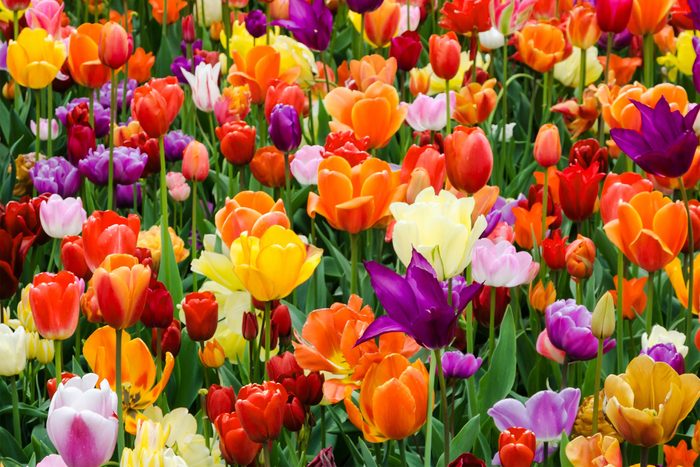
Tulips
What would springtime be without tulips? This iconic flower is the harbinger of spring, emerging just as the soil begins to warm up. It blooms from April through May in the Midwest and on the East Coast.
Although Southerners can plant pre-chilled tulip bulbs to enjoy for a single season, they’re easiest to grow where cold winters last at least 12 weeks.
Look for early-, mid- and late-blooming varieties to extend the tulip show over many weeks in the spring. You’ll find them at garden centers and mail-order sources in late summer for fall planting. Choose a sunny spot with well-drained soil, and use animal repellent if squirrels and deer are an issue. You can even use them in a cut flower garden.
